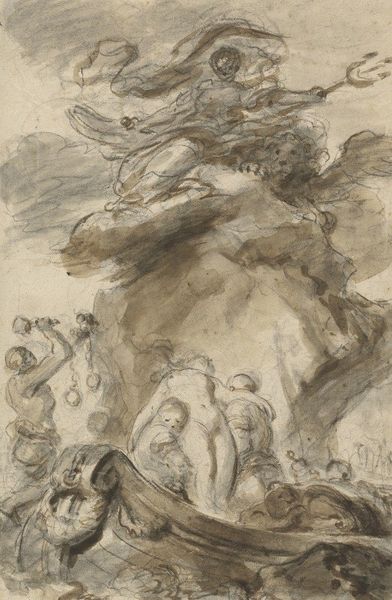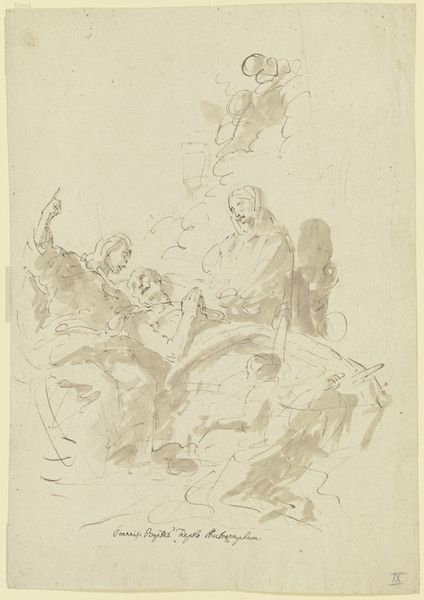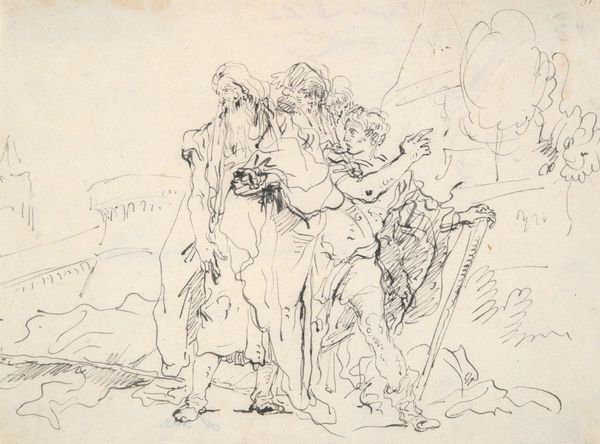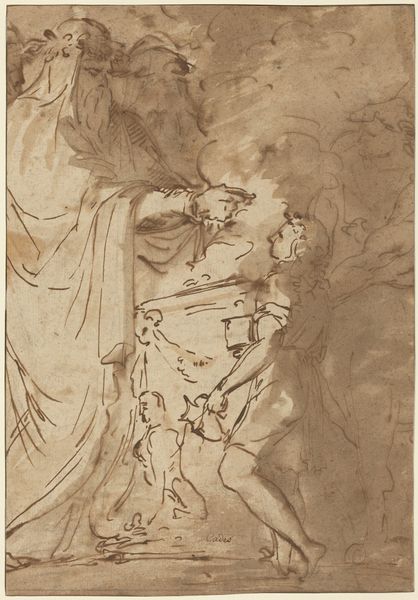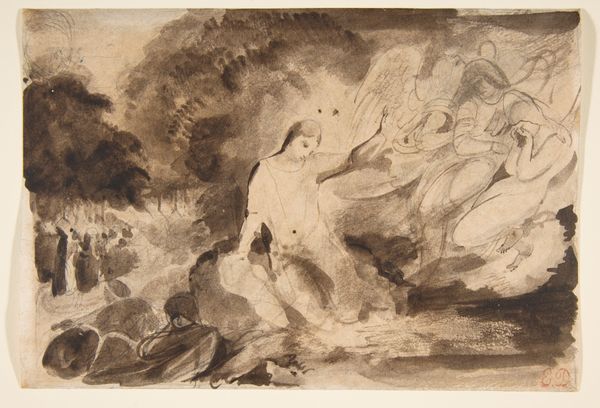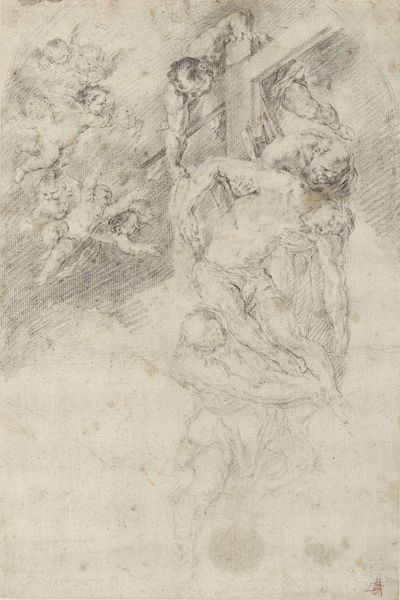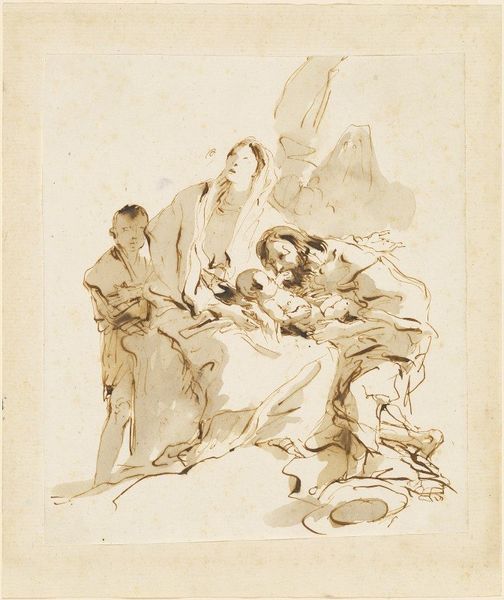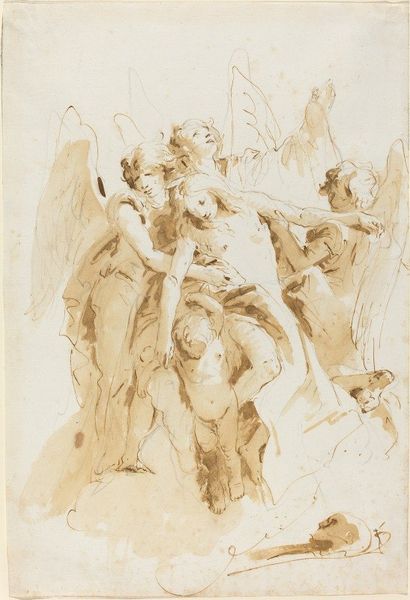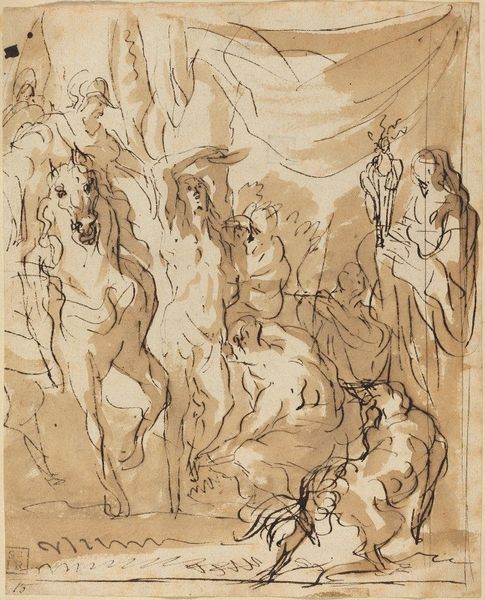
drawing, ink
#
drawing
#
baroque
#
figuration
#
ink
#
line
#
history-painting
Copyright: Public Domain: Artvee
Editor: Here we have Sebastiano Ricci's drawing, "The Ecstasy of Saint Francis," made sometime between 1706 and 1720 using ink. I find the whirlwind of figures quite arresting. The angel's expression seems so tender. What do you see in this piece? Curator: Well, the swirling Baroque dynamism is certainly captivating. Look how Ricci uses line, almost like calligraphy, to evoke both spiritual intensity and movement. The image pulses with visionary fervor. Consider how Francis, the saint known for his humility, receives divine attention in this ecstatic vision. Have you noticed how Ricci portrays the stigmata on Francis? Editor: Yes, they're rather subtly indicated, not overtly graphic. Is that significant? Curator: Precisely. This is not just about physical pain, but the spiritual union, the reception of divine grace. The stigmata are symbols loaded with meaning about Francis' devotion to the image of Christ, blurring the sacred boundary. These marks allow us access to Francis' memories, making us a witness to his transformative experience. Do you think this drawing adequately reflects what we believe it stands for, despite it being just an initial sketch? Editor: It is amazing how a sketch can still convey so much emotion and symbolism! Curator: Absolutely. And reflecting on these layered symbols in turn unlocks understanding about history, faith, devotion and a range of emotional meanings within the visual imagery itself. Editor: Thank you, it's given me a much deeper understanding. Curator: My pleasure. I leave this image now enriched with your perspectives.
Comments
No comments
Be the first to comment and join the conversation on the ultimate creative platform.
